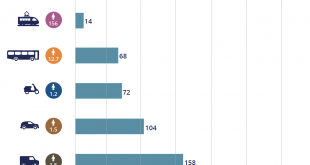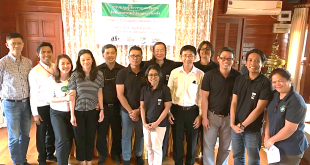Walking & Cycling On the Path to Become a Public Policy

From ideas to a NHA Resolution
2011 TCC prepared information to propose walking and cycling promotion as an agenda in the National Health Assembly (NHA).
2012 February: TCC made such proposal to the National Health Commission (NHC).
May: The proposal was one of eleven cases being selected from altogether 52 cases being proposed.
December: The Fifth National Health Assembly (2012) passed Resolution 5.1 on “Systems and Structures for Promotion of Walking and Cycling in Daily Life”.
2013 August: The NHC approved the NHA Resolution 5.1 and submitted it to the Government Cabinet for consideration.
November: The Government Cabinet passed a resolution acknowledging the NHA Resolution 5.1 and assigned related government agencies to consider taking actions.
Driving implementation of the NHA Resolution 5.1
2013 November: (1) Meeting with Director General of the Department of Public Works and Town & Country Planning (DPT), Ministry of Interior, to discuss improving ministerial decrees issued under the Building Control Act and local regulations requiring public and large buildings to provide bicycle parking facilities; (2) Meeting with Permanent Secretary of the Ministry of Industry to discuss the ministry’s possible areas and scope of work to promote walking and cycling.
December: Meeting Deputy Director of the Office of Transport Policy and Planning (OTPP) to discuss promotion of walking and cycling as non-motorised transport (NMT) in general and as feeder system for public transport (bus and rail).
2014 January: Signing of MoU between Industry Ministry and TCC for cooperation on academic aspects, public relations and promotion of cycling, walking and movement of disabled persons related industries.
April: Workshop with organisations of disabled persons to discuss standards of disabled persons’ movement assisting equipment.
July: A Working Group to Drive Systems and Structures for Promotion of Cycling and Walking in Daily Life was appointed by the NHC’s NHA Resolutions Implementation Driving and Monitoring Committee with TCC being Secretariat. The working group first met in October and met regularly about every two months.
November: (1) Meeting with the Inspector General of the Prime Minister Office to discuss the NHA Resolution that asks the PMO to coordinate cycling and walking promotion and actions by various ministries; (2) Meeting Deputy Director General of the Department of Local Administration (DLA) who offered TCC to talk about cycling and walking promotion at its training institute and work together for the promotion in a pilot local area.
2015 January: (1) Meeting with Deputy Minister of the Ministry of Transport together Director General of the Department of Rural Roads, Deputy Governor of the Expressway Authority of Thailand and Director of the Transport Safety Office in the Ministry’s Permanent Secretary Office to discuss implementation of the NHA Resolution related to the ministry. (2) Meeting with Deputy Permanent Secretary of the Ministry of Tourism and Sports and staff from the ministry’s Office of Tourism and Sports Policy and Strategies to discuss actions the ministry is particularly specified by the NHA Resolution to take.
February: (1) Meeting with staff from the OTPP to discuss roles of the OTPP in relation to the NHA Resolution; (2) Meeting with Assistant Permanent Secretary of the Ministry of Education and key officials of the Ministry Permanent Secretary Office to discuss cycling and walking promotion the ministry is planning to do as a whole and actions specified particularly by the NHA Resolution.
The NHA Resolution 5.1 asks government agencies to consider taking following actions:

1. The Prime Minister’s Office to adopt a policy making walking and cycling a major mode for short-distance travel and coordinate with other public agencies in its implementation;
2. The Ministry of Transport to promote connecting walking and cycling with the public transport systems and to make the issue of being considerate to all groups of pedestrians and cycle users part of the driving license tests;
3. The Ministry of Interior and local government organizations to amend ministerial regulations issued under the Building Control Act and bylaws requiring owners of large buildings and public buildings, including public transport terminals, to make available convenient, safe and sufficient parking spaces for cycles, as well as requiring provincial authorities to support walking and cycling in a concrete manner;
4. The Department of Local Administration to make walking and cycling an agenda for local administrative organizations to put in place an infrastructure suitable and safe for walking, uses of walkways and traveling by people with disabilities, and cycling, to set speed limit zones for motor vehicles and lanes for cycles, with clear symbols and signs in the community areas, disseminate information and launch campaigns on a regular basis to stimulate public awareness on walking and cycling in daily living;
5. The Ministry of Education to require its education institutes to have courses to provide knowledge and develop skills for correct and safe walking and cycling, e.g. providing knowledge about hand signals and use of cycle lights and supporting the use of personal safety equipment on a continuing basis to students, and promoting walking and cycling to schools through the involvement of students, their parents and the community as well as providing walking and cycling facilities within the education institutes;
6. The Ministry of Industry to promote business operators and industries that manufacture goods and provide services relating to walking and cycling as well as equipment that facilitate the travel of people with disabilities in good quality and at a fair price;
7. The Ministry of Public Health, and Ministry of Tourism and Sports, to campaign for the general public to walk and cycle in daily life and support activities designed to promote walking and cycling on a continuing basis;
8. The Ministry of Energy to have a policy and measures promoting non-motorized transport as well as equipment that facilitate the travel of people with disabilities;
9. The Ministry of Tourism and Sports, and Tourism Authority of Thailand, to support cycling tourism and encourage accommodation operators to prepare bicycles for tourists;
10. The Ministry of Finance to have tax measures designed to encourage, promote and motivate the public to use cycles in their daily life;
11. The Thai Health Promotion Foundation to support health promotion, campaign, and generation of a body of knowledge to drive policy and create health behaviors through walking and cycling in daily life.
 ชมรมจักรยานเพื่อสุขภาพแห่งประเทศไทย ชมรมจักรยานเพื่อสุขภาพแห่งประเทศไทย
ชมรมจักรยานเพื่อสุขภาพแห่งประเทศไทย ชมรมจักรยานเพื่อสุขภาพแห่งประเทศไทย



